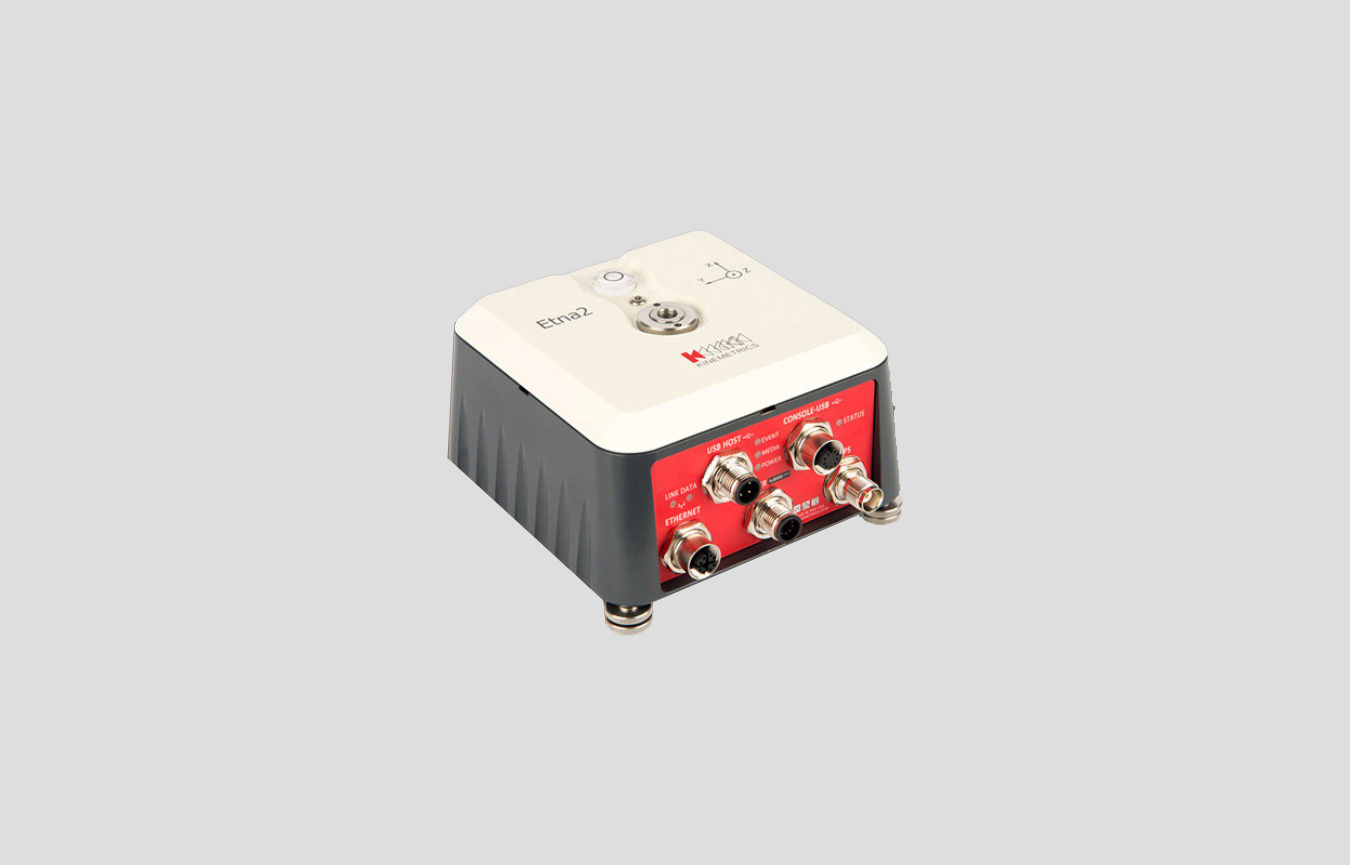ETNA2
Kinemetrics’ ETNA accelerograph established the world’s standard for strong motion recording for almost two decades with more than 6000 installations worldwide. The ETNA 2
represents the next generation of ETNA-class accelerographs offering NEW and cost effective, web based monitoring capabilities paired with another Kinemetrics’ established
world standard, the exemplary EpiSensor accelerometer.
Product details
The ETNA 2 is easy to use since it was designed around the Rockhound application software first implemented on the Basalt instruments and continued now on the new Obsidian instruments.
ETNA 2 offers the most essential accelerograph features supporting a wide range of earthquake monitoring applications in a small, lightweight, and simple to use package. If you are interested in Earthquake Early Warning, in structural monitoring, in aftershocks surveys or even in induced earthquake monitoring related to oil and gas, and geothermal fluid injection activities, the ETNA 2 is the right product for you.
And for those whose job it is to maintain large number of stations, we implemented Streamlined Station Maintenance (SSM) that allows you to use your browser to log maintenance activities such as software updates, site inspections, or battery replacements right on the unit. These logs can be automatically uploaded to your data center for archiving, reducing paper work in the field, and eliminating human error.
3 sensor channels with an internal EpiSensor triaxial deck
24-bit Delta Sigma converter, one per channel
Matched to Kinemetrics outstanding EpiSensor accelerometer performance
Built-in GPS/GNSS and PTP timing options
Record and communicate multiple sample rates
Earthquake Early Warning low latency 0.1s packets ready
Multiple telemetry protocols: ORB natively or public domain Earthworm and SeedLink
Streamlined Station Maintenance (SSM)
Data offloaded automatically to removable thumb drive connected to the USB host port. Parallel recording (mirroring) data on an external USB thumb drive.
Wireless communications via cellular modem
State-of-health monitoring, including input and system voltages, internal temperature, communication link diagnostics, available storage
IP Security through SSH and SSL
Reverse voltage protection and self resettable fuses
System Status LEDs
Surviving temporary immersion at 1m depth (rated IP67)
Designed for RoHS Compliance and easy re-cycling
Designed for the lowest Total Cost of Ownership (TCO)
Technical specification
| Sensor | |
| Type: | Triaxial EpiSensor force balance accelerometers, orthogonally oriented, i nternal |
| Full scale range: | User selectable at ±1g, ±2g or ±4g |
| Bandwidth: | DC to 200 Hz |
| Dynamic range: | 155 dB+ |
| Offset: | Factory set, software re-zeroing |
| Digitizer | |
| Channels: | 3 24-bit sensor channels for the internal sensors bandwidth-optimized 32-bit data path |
| Dynamic range: Shorted - |
~130 dB at 100 sps (defined as RMS clip to RMS input noise) or ~139 dB at 100 sps (defined as full scale peak to peak to RMS shorted-input noise) |
| Primary sample rates: | 1, 10, 20, 50, 100, 200, 250, 500 sps |
| Secondary sample rates: | A second lower sample rate can be selected from the primary sample rates above |
| Acquisition modes: | Continuous (ring buffer) and triggered |
| Calibration & test: | Pulse and Sensor Response Test |
| Trigger | |
| Trigger selection: | Independently selected for each channel Internal |
| Trigger: | Threshold, selectable from 0.01% to 100% of full scale or STA/LTA algorithm |
| Trigger voting: | Internal and network trigger votes with arithmetic combination |
| Timing | |
| Type: | Oscillator digitally locked to GPS/GNSS or to PTP master |
| Accuracy: | <1 microseconds of UTC with GPS/GNSS locked |
| Storage | |
| Data storage: | Internal SDHC Card, 32 GB |
| System storage: | Internal SDHC Card, 4 GB |
| Data: | Offloaded automatically to removable thumb drive connected to the USB host port. Parallel recording (mirroring) data on an external USB thumb drive. File formats: MiniSEED, EVT, and ASCII. Other formats available. USB drive file system: FAT32 |
| Interfaces and Digital Control | |
| Interfaces: | 1 x Ethernet 10/100BaseT |
| (M12 connectors) | 1 x USB 2.0 Device Port for data access 1 x USB 2.0 Host Port for peripherals 1 x RS-232 for factory use only |
| Relays: | 2 x SPDT relays, software configurable |
| LEDs: | System, power and event status, Ethernet Link |
| Magnetic switch: | Backup on/off internal switch |
| Communications | |
| Ethernet interface: | Real Time Telemetry (Multiple destinations TCP/IP Protocol), web server for parameter setup, event retrieval via FTP/SFTP; supports Point of Contact (POC) name service Modem: External, cellular or POTS, connected via the USB 2.0 Host interface; consult factory for details |
| Protocols: | Real-time data streaming via Antelope compatible ORB server or via public domain SEEDLink and Earthworm protocols |
| State-Of-Health: | Input voltage, Super Capacitor voltage, Time synchronization, internal temperature, available storage |
| Low latency: | 1s and 0.1s data packets i.e, for EEWS applications |
| Data visualization: | Waveform Viewer for continuous waveform display and File Viewer for triggered event display; consult factory for other support software |
| Power Requirements | |
| Consumption | <3W operational |
| Voltage range: | 9-28 VDC |
| Protections: | Reverse voltage, over/under voltage, self resettable fuses |
| Physical | |
| Mounting: | Central bolt, 3 adjustable feet, air bubble leveling |
| Dimensions: | 6” x 6” x 3” (15cm x 15 cm x 7.5cm) |
| Volume: | 1.6 liters |
| Weight: | 3.3 lbs. (1.5 kg) |
| Environmental | |
| Temperature range: | -20° to 70°C operational |
| Humidity: | 0-100% RH (non-condensing) |
| Enclosure rating: | IP67 |

